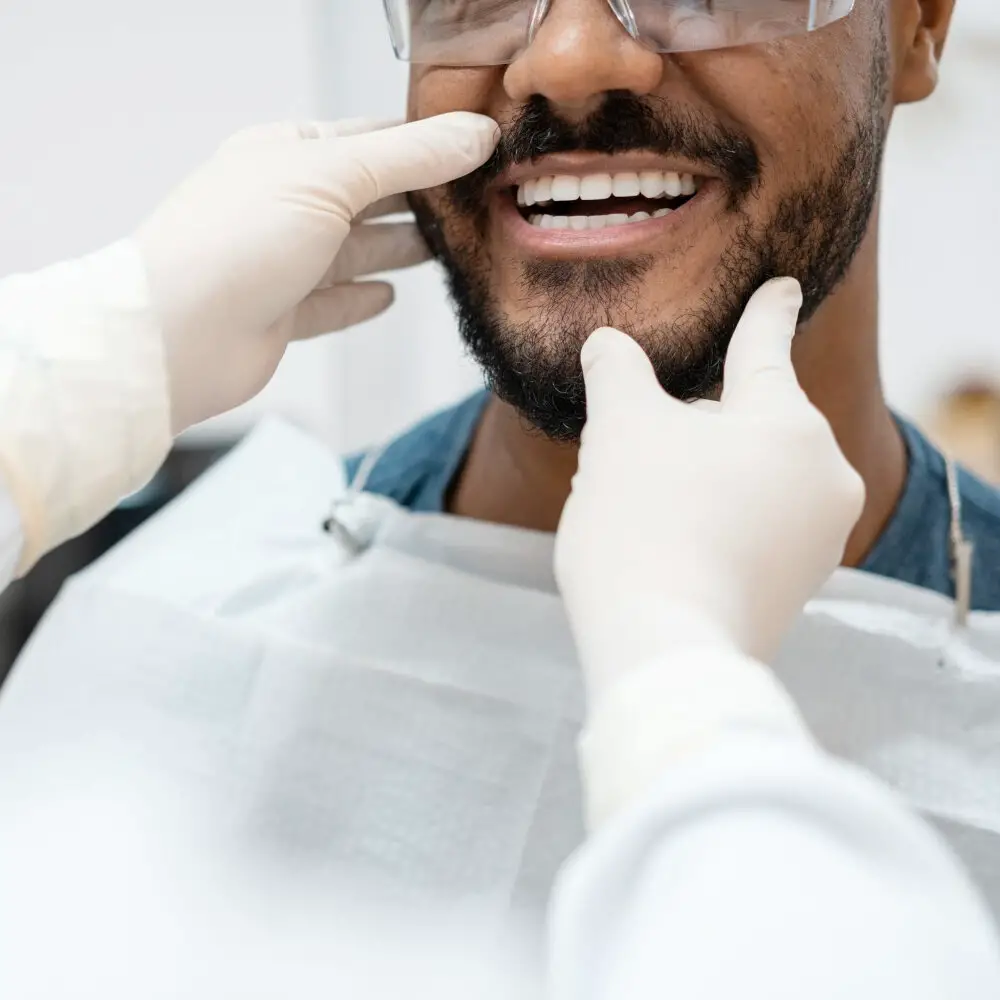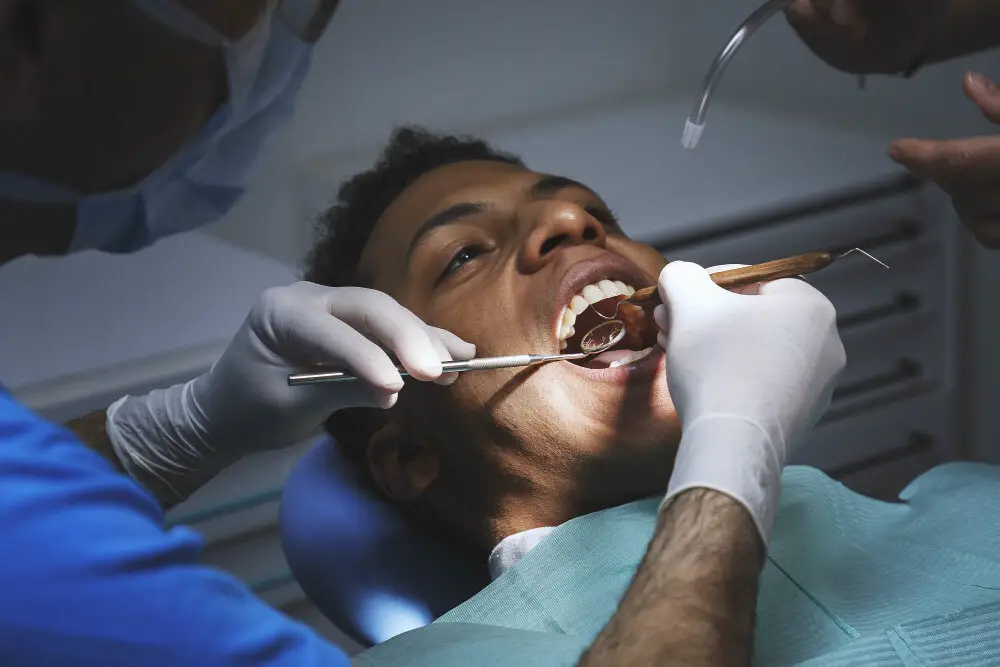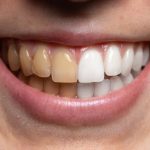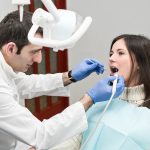Signs of Wisdom Teeth Eruption: How to Tell When Your Third Molars are Coming In?

Wisdom teeth, also known as third molars, are the last set of teeth to erupt in the mouth, usually appearing between the ages of 17 and 25. While some people may have no problems with their wisdom teeth, others may experience pain and discomfort due to their eruption. It’s important to be aware of the signs of wisdom teeth eruption so that you can take action if necessary. One of the most common signs of wisdom teeth eruption is pain or discomfort in the back of the mouth. This can be caused by the pressure of the erupting tooth on the surrounding teeth and gums. Some people may also experience swelling or tenderness in the gums surrounding the wisdom tooth. In some cases, the wisdom tooth may become impacted, which means that it is stuck beneath the gumline and cannot fully emerge. This can cause pain and swelling, and may even lead to infection if left untreated. Understanding the signs of wisdom teeth eruption can help you take steps to manage any discomfort and prevent complications.
Wisdom teeth, also known as third molars, are the last set of teeth to emerge in the back of the mouth, usually between the ages of 17 and 25. Most people have four wisdom teeth, but some may have fewer or none at all. The eruption process can be painful or uncomfortable for some individuals, as the teeth push through the gums and align themselves with the rest of the teeth. Symptoms of wisdom teeth eruption can include swelling, pain or tenderness, difficulty opening the mouth, and even mild fever. In some cases, the teeth may become impacted, meaning they don’t have enough space to fully emerge, leading to infection or damage to surrounding teeth. If you experience any of these symptoms, it’s important to consult with a dentist to determine the best course of action.
Common Age of Wisdom Teeth Eruption

Wisdom teeth, also known as third molars, usually begin to emerge between the ages of 17 and 25. This period is commonly referred to as the age of wisdom teeth eruption. However, it’s important to note that not everyone will experience wisdom teeth eruption during this age range. Some individuals may have their wisdom teeth erupt earlier or later, and in some cases, they may not erupt at all. If you’re unsure whether your wisdom teeth have erupted or not, it’s best to consult a dental professional for an examination. When wisdom teeth begin to emerge, it’s normal to experience some discomfort and pain. This is due to the fact that there may not be enough space in the mouth for the new teeth to grow, causing them to push against existing teeth and gum tissue. Some common signs of wisdom teeth eruption include swollen gums, jaw pain, bad breath, and difficulty opening your mouth. In some cases, impacted wisdom teeth can cause more severe symptoms such as infections, cysts, and damage to surrounding teeth. If you’re experiencing any of these symptoms, it’s important to seek dental treatment as soon as possible to prevent further complications.
The age range for wisdom teeth eruption varies from person to person, but typically they emerge between the ages of 17 and 25. These molars are the last set of teeth to come in and can cause discomfort and pain for many people. Some individuals may experience no symptoms at all, while others may feel pressure, swelling, or pain in the back of their mouth. In some cases, wisdom teeth may become impacted, meaning they are unable to fully emerge from the gums and may need to be extracted. It is important to keep an eye on the development of your wisdom teeth and consult with a dentist if you experience any discomfort or changes in your oral health.
Age is a crucial factor when it comes to the eruption of wisdom teeth. These molars typically appear between the ages of 17 and 25, and their arrival can vary based on genetics and individual development. The timing of wisdom teeth growth is important because it can impact their alignment and overall health. If they erupt too early or too late, they may not have enough space to come through properly, leading to crowding, impaction, infection, or damage to surrounding teeth. Therefore, it’s essential to monitor the progress of wisdom teeth and seek professional advice if any signs of eruption or complications arise.
Physical Symptoms of Wisdom Teeth Eruption

As wisdom teeth start to develop, they can cause a range of physical symptoms that are often uncomfortable and painful. One of the most common symptoms is swelling and tenderness in the gums, which can make it difficult to eat and speak without discomfort. This swelling occurs as the teeth emerge from the gums and can create a feeling of pressure in the mouth. In some cases, the gums may even become infected, leading to more severe discomfort and potential complications. Another physical symptom of wisdom teeth eruption is jaw pain and stiffness. As the teeth begin to push through the gums, they can cause a sensation of pressure and discomfort that can radiate throughout the jaw. This can make it difficult to open and close the mouth, and may even cause headaches or earaches in some cases. Additionally, as the teeth continue to grow and move, they can sometimes push against other teeth, leading to misalignment and bite problems. Overall, it’s important to pay close attention to any physical symptoms of wisdom teeth eruption and seek dental care as soon as possible to prevent further complications.
Pain or discomfort in the back of the mouth or jaw can be a telltale sign of wisdom teeth eruption. As these third molars begin to emerge, they may push against surrounding teeth and cause discomfort or soreness. In some cases, impacted wisdom teeth can even lead to infection or damage to nearby teeth and gums. It’s important to pay attention to any pain or discomfort in the back of the mouth and consult with a dental professional to determine if wisdom teeth removal is necessary. With prompt attention and care, any potential issues with wisdom teeth can be addressed before they become more serious.
Swelling or inflammation around the gums is a common sign of wisdom teeth eruption. As the third molars begin to push through the gums, they can cause discomfort, redness, and tenderness. This swelling is often localized to the area around the affected tooth, but it can also spread to nearby teeth and gums. In some cases, the swelling may be accompanied by pain or a sensation of pressure. If left untreated, the swelling can worsen and lead to infection or other complications. It is important to seek the advice of a dental professional if you are experiencing any of these symptoms, as they can help to alleviate discomfort and prevent more serious issues from developing.
One of the most common signs of wisdom teeth eruption is difficulty opening the mouth or chewing. This can be due to the pressure and inflammation caused by the new teeth pushing through the gums. The discomfort can range from mild to severe, making it difficult to eat, drink, or speak comfortably. In some cases, the pain may radiate to the ear or jaw, leading to headaches or jaw stiffness. It’s important to monitor any changes in your oral health and consult a dentist if you experience persistent pain or difficulty with your wisdom teeth.
One of the most common signs of wisdom teeth eruption is bad breath or an unpleasant taste in the mouth. As these teeth begin to push through the gums, they can create pockets where bacteria can accumulate and cause an odor. Additionally, the pressure from the erupting teeth can cause discomfort and inflammation, which can also contribute to bad breath. It’s important to maintain good oral hygiene during this time, as it can help minimize the buildup of bacteria and reduce the severity of symptoms. Using an antibacterial mouthwash, flossing regularly, and brushing twice a day can all help keep your mouth feeling fresh and clean. If you notice persistent bad breath or any other concerning symptoms, it’s best to consult with your dentist to determine if wisdom teeth extraction may be necessary.
Dental Symptoms of Wisdom Teeth Eruption

Dental symptoms of wisdom teeth eruption can be quite uncomfortable and painful. The most common symptom is pain and swelling in the back of the mouth where the wisdom teeth are located. The pain can be mild or severe and can radiate to the jaw, ear, and neck. The swelling can make it difficult to open the mouth fully, chew, or speak. Other dental symptoms of wisdom teeth eruption include bleeding gums, bad breath, and difficulty brushing and flossing. The wisdom teeth can be difficult to clean, which can lead to an accumulation of bacteria and food particles, causing bad breath and gum disease. If you experience any of these symptoms, it is important to see a dentist or oral surgeon as soon as possible. In addition to the dental symptoms of wisdom teeth eruption, there are also general symptoms that can occur. These include headaches, fever, and general malaise. These symptoms can be caused by the inflammation and infection in the mouth associated with wisdom teeth eruption. If you experience these symptoms along with dental symptoms, it is important to seek medical attention immediately. Delaying treatment can lead to more serious complications such as abscesses, cysts, and damage to adjacent teeth. By recognizing the dental and general symptoms of wisdom teeth eruption, you can take proactive steps to manage your discomfort and prevent serious complications.
When wisdom teeth begin to emerge, they may cause crowding or shifting of other teeth in the mouth. This can lead to discomfort or pain as the teeth push against one another and can result in bite alignment issues. Crowding occurs when there is not enough space for the new teeth to come in properly, and they may become impacted or partially impacted as a result. Shifting can happen when the pressure from the emerging teeth causes adjacent teeth to move out of their proper position. In either case, it is important to monitor the progress of your wisdom teeth and consult with a dental professional if you experience any pain or discomfort.
The visible appearance of wisdom teeth can vary depending on the individual’s anatomy and the position of the teeth. In most cases, these molars appear at the back of the mouth, behind the second molars. They typically have a rounded shape and are larger than the other teeth in the mouth. Due to their position, they can be difficult to see, but they may become visible as they begin to emerge from the gums. In some cases, wisdom teeth may only partially erupt, which can cause discomfort and make them more prone to infection. It’s important to keep an eye on the appearance of these teeth and seek dental attention if any issues arise.
X-ray evidence of tooth development is an essential tool for dentists to monitor the growth and development of teeth. By examining X-rays, dentists can determine the stage of development of the wisdom teeth, which are the last teeth to emerge in the mouth. The X-rays show the position of the tooth in relation to the jawbone and the angle of its growth. Additionally, they can provide information about the space available for the tooth to erupt and the possible impact on the adjacent teeth. The development of wisdom teeth can be monitored using X-rays to detect any potential problems and allow for prompt treatment if necessary.
Complications of Wisdom Teeth Eruption

Wisdom teeth, also known as third molars, are the last set of teeth to emerge in the back of your mouth, usually between the ages of 17 and 25. While some people’s wisdom teeth come in without any problems, for many others, the emergence of these teeth can cause complications. One of the most common complications is overcrowding, which occurs when there is not enough space in the mouth for the new teeth. This can cause the wisdom teeth to grow in at an angle, pushing against the neighboring teeth and causing pain and discomfort. It can also make it difficult to properly clean the teeth, leading to tooth decay, gum disease, and infection. Another complication of wisdom teeth eruption is impaction, which occurs when the tooth is unable to fully emerge from the gum line. This can cause swelling, tenderness, and pain, and can even lead to infection. In some cases, the impacted wisdom tooth can also cause damage to the surrounding teeth and bone. In rare cases, cysts or tumors can develop around the impacted tooth, which may require surgery to remove. If you experience any of these symptoms, it is important to see a dentist or oral surgeon for an evaluation, as early treatment can help prevent further complications.
Impacted wisdom teeth are a common dental issue that occurs when the third molars are unable to emerge properly due to lack of space or obstruction in the jaw. This can cause discomfort, pain, and infection. Some common signs of impacted wisdom teeth include swelling, redness, and soreness in the gums, difficulty opening the mouth, and bad breath. In some cases, impacted wisdom teeth can also cause damage to surrounding teeth and lead to the formation of cysts or tumors in the jaw. It is important to visit a dentist regularly to monitor the development of wisdom teeth and address any issues before they become more severe.
Infection or abscess around the wisdom teeth is a common issue that can arise when the third molars are coming in. This occurs when bacteria accumulate in the gum tissue surrounding the tooth, causing inflammation and swelling. Patients may experience pain, fever, and difficulty opening their mouth, as well as a foul taste or odor emanating from the affected area. It is important to seek treatment for an infection or abscess promptly, as the condition can worsen and lead to more serious health problems if left untreated. Treatment options may include antibiotics, drainage of the abscess, or removal of the wisdom tooth.
When wisdom teeth begin to emerge, they can cause damage to adjacent teeth or gums. This can happen when there is not enough space for the tooth to come in properly, causing it to push against the surrounding teeth and gums. The pressure can lead to pain, swelling, and even infection in some cases. In addition, the emerging tooth can also cause damage to nearby teeth by creating cavities, decay, or even shifting the alignment of teeth. It’s important to monitor the development of wisdom teeth and consult with a dentist if any signs of damage or discomfort occur.
Cysts or tumors related to wisdom teeth can occur when the tooth is unable to fully emerge from the gum line. As a result, a pocket of fluid can form around the tooth, leading to the development of a cyst. While not all cysts are cancerous, they can still cause discomfort and damage to surrounding teeth and bone. Tumors can also form around wisdom teeth and can be either benign or malignant. Symptoms of cysts or tumors related to wisdom teeth can include pain, swelling, and difficulty opening the mouth. It’s important to monitor the development of wisdom teeth and to seek dental care if any symptoms arise to prevent potential complications.
Wisdom teeth, also referred to as third molars, typically emerge between the ages of 17 and 25. When they begin to erupt, you may experience a variety of symptoms that indicate their arrival. The most common signs of wisdom teeth eruption include pain and tenderness in the back of the mouth, swelling of the gums, difficulty opening the mouth, and a slight fever. It’s also possible to experience headaches, bad breath, and an unpleasant taste in the mouth. If you notice any of these symptoms, it’s important to visit your dentist to confirm that your wisdom teeth are indeed erupting and to receive guidance on how to manage any discomfort that may arise.
If you suspect that your wisdom teeth are starting to emerge, it is recommended that you schedule an appointment with your dentist to monitor their development. Regular dental check-ups can help detect the early signs of wisdom teeth eruption, including jaw pain, swelling, or difficulty opening your mouth. Your dentist may also recommend an X-ray to determine the position of your wisdom teeth and if they will cause any issues. If your wisdom teeth are impacting your oral health, such as causing crowding or infection, your dentist may suggest removal. It is essential to address wisdom teeth development promptly to prevent any potential complications and ensure proper oral care.
It is critical to seek professional dental care and advice if you suspect that your wisdom teeth are erupting. Wisdom teeth can cause a variety of dental problems, including overcrowding, tooth decay, gum disease, and infection, and can even damage neighboring teeth. A professional dentist can effectively monitor and manage the growth and development of your wisdom teeth, providing preventative care and early intervention if necessary. Regular dental checkups can also help to identify potential issues early on, allowing for prompt and effective treatment. Seeking professional dental care and advice is essential in maintaining good oral health, and can help to prevent serious dental problems from developing in the future.
Conclusion

In conclusion, recognizing the signs of wisdom teeth eruption is an essential aspect of dental health. As the last set of molars to emerge, they can cause discomfort and complications if not properly managed. Some of the most common symptoms include pain, swelling, and sensitivity in the back of the mouth. Additionally, changes in bite or alignment should be noted. If you suspect that your wisdom teeth are coming in, it is crucial to consult with a dental professional who can provide personalized guidance and treatment options. By staying aware of these signs and taking proactive steps to address them, you can ensure optimal oral health and minimize the risk of complications associated with wisdom teeth eruption.







